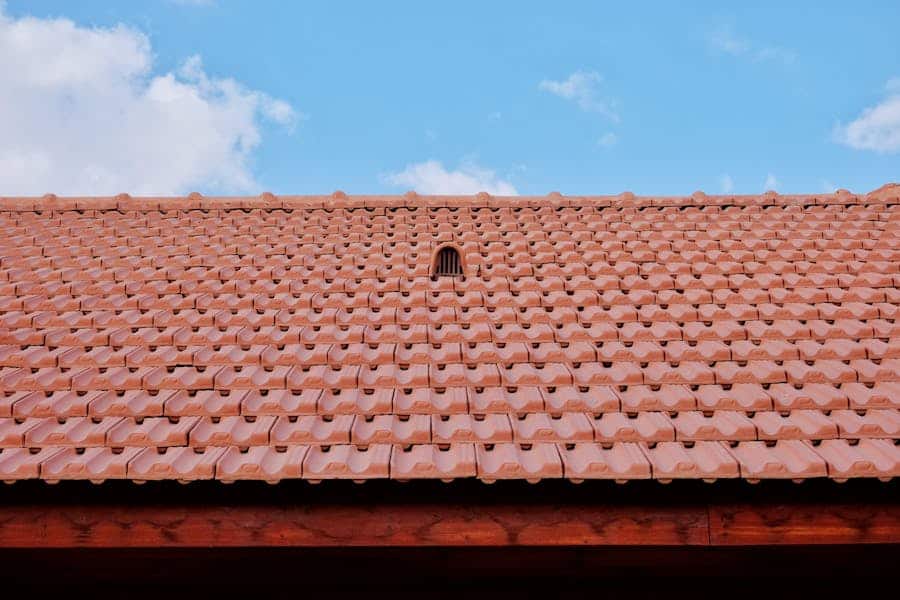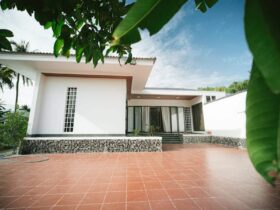Slate roofs outperform shingle roofs in durability and resistance to elements and environmental factors. Slate is fireproof, water-resistant, and inhibits algae and moss growth, making it a superior roofing material.
When choosing between slate and shingle roofing, there are several factors to consider. Slate roofs offer unparalleled longevity and aesthetic appeal, while shingle roofs are more cost-effective and easier to install. Understanding the pros and cons of each roofing material is crucial for making an informed decision based on your specific needs and budget.
In this blog post, we will delve deeper into the differences between slate and shingle roofs to help you determine the best option for your home.
Slate Vs Shingle Roofing: Key Differences
Slate and shingle roofing differ in material and appearance. Slate offers durability and a natural, elegant look, while shingles provide versatility and cost-effectiveness. The choice between them depends on factors such as budget and aesthetic preferences.
Material Composition
Slate roofing is made of natural stone, which makes it a highly durable and long-lasting roofing material. Shingle roofing, on the other hand, is typically made of asphalt and fiberglass or organic materials. While shingle roofing is also durable, it may not last as long as slate roofing and may require more frequent repairs and maintenance.
Aesthetic Impact
Slate roofing is known for its classic and elegant appearance, which can add significant curb appeal to any home. Shingle roofing, on the other hand, comes in a variety of styles and colors, making it a versatile option for homeowners who want a more customizable look for their roof.
Cost
Slate roofing is typically more expensive than shingle roofing due to its high-quality material and longer lifespan. However, shingle roofing may require more frequent repairs and replacement, which can add up over time.
Weight And Installation
Slate roofing is heavier than shingle roofing and may require additional structural support during installation. Shingle roofing, on the other hand, is lightweight and easy to install.
Maintenance
Slate roofing requires minimal maintenance and is resistant to water, fire, and algae growth. Shingle roofing may require more frequent maintenance and repairs to prevent damage from weather and wear and tear.
In conclusion, when deciding between slate and shingle roofing, it is important to consider the material composition, aesthetic impact, cost, weight and installation, and maintenance requirements. While slate roofing may be more expensive initially, it can provide a longer lifespan and classic appearance, while shingle roofing offers versatility and customization options. Ultimately, the decision depends on the homeowner’s priorities and budget.
Lifespan And Durability
When considering the choice between slate and shingle roofing, the lifespan and durability of each material are crucial factors to weigh. Let’s delve into the endurance of slate roofing and the performance of shingle roofing to determine which option best suits your needs.
Slate’s Endurance
Slate roofing boasts an exceptional lifespan, often lasting over 100 years with proper maintenance. This natural stone material is highly durable, offering unparalleled resistance to fire, storms, water, and organic growth. Its impermeability to water and resilience against algae and moss make it a top choice for longevity and sustainability.
Shingle’s Performance
Shingle roofing presents a more varied picture in terms of durability. While asphalt shingles offer decent longevity of around 20-30 years, they are more susceptible to damage from weather and organic growth. On the other hand, modern synthetic shingles can provide improved durability and resistance, but still generally have a shorter lifespan compared to slate.
Installation Process
When it comes to installing a new roof, the process can vary depending on the type of roofing material being used. In this section, we will explore the installation process for both slate roofs and shingle roofs, highlighting the differences between the two.
Slate’s Complexity
Slate roofs are known for their durability and timeless beauty, but the installation process can be quite complex. Due to the weight of the slate tiles, the roof structure needs to be reinforced to ensure it can support the load. This often involves adding additional framing and support beams, which can increase the overall cost of the installation.
In addition to the structural requirements, the installation of slate tiles requires a high level of skill and expertise. Each tile needs to be carefully measured, cut, and installed, ensuring a precise fit. This meticulous process can be time-consuming and requires the expertise of experienced roofers.
Shingle’s Ease Of Installation
On the other hand, shingle roofs offer a much simpler installation process compared to slate roofs. Shingles are lightweight and can be easily installed on most roof structures without the need for extensive reinforcement.
Installing shingles typically involves laying down a layer of underlayment, followed by the placement of the shingles in a staggered pattern. This process is relatively straightforward and can be completed more quickly compared to slate roof installations.
Overall, the installation process for slate roofs is more complex and time-consuming compared to shingle roofs. While slate roofs offer durability and a timeless aesthetic, they require careful planning and skilled labor for a successful installation. Shingle roofs, on the other hand, are easier to install and require less structural reinforcement, making them a more cost-effective option for homeowners.
Cost Comparison
When it comes to choosing between slate and shingle roofs, cost is an important factor to consider. While slate roofs offer a range of benefits, they often come with a higher initial investment compared to shingle roofs. However, it’s essential to look beyond the initial cost and consider the long-term value of each option.
Initial Investment
When installing a new roof, the initial investment for a slate roof can be significantly higher than that of a shingle roof. Slate is a natural stone that requires skilled craftsmanship and meticulous installation. The cost of the materials, labor, and additional structural reinforcements, if necessary, can quickly add up. On the other hand, shingle roofs, especially asphalt shingles, are more affordable and easier to install.
Long-term Value
While the upfront cost of a slate roof may be higher, it offers exceptional long-term value. Slate is known for its durability and longevity, with a lifespan of up to a century or more. This means that once you invest in a slate roof, you can enjoy its benefits for a lifetime, potentially eliminating the need for future replacements and repairs.
On the other hand, shingle roofs, although more affordable initially, may require more frequent replacements and repairs. Asphalt shingles typically have a lifespan of around 20-30 years, depending on various factors such as climate and maintenance. Over time, the cost of multiple replacements can add up, making shingle roofs less cost-effective in the long run.
Additionally, slate roofs offer excellent resistance to extreme weather conditions, fire, and the growth of algae and moss. These qualities contribute to their long-term value and can potentially save you money on repairs and maintenance in the future.
While the initial investment for a slate roof may be higher, it offers superior long-term value and durability compared to shingle roofs. The decision ultimately depends on your budget and preferences. If you are looking for a cost-effective option that still provides decent longevity, shingle roofs might be the better choice. However, if you prioritize durability, longevity, and the potential for long-term savings, a slate roof is worth considering.
Weight And Structural Considerations
When choosing between a slate roof and shingle roof, it is crucial to consider the weight and structural implications of each roofing material. Below, we will explore how slate’s heaviness and shingle’s flexibility impact the structural integrity of your home.
Slate’s Heaviness
Slate roofs are renowned for their durability and longevity. However, one of the key factors to consider is the significant weight of slate tiles. On average, slate tiles can weigh between 800 to 1,500 pounds per square, exerting substantial pressure on the roof structure. This weight may necessitate additional structural support to ensure the roof can bear the load effectively.
Shingle’s Flexibility
Unlike slate, shingles are much lighter and more flexible, making them a popular choice for residential roofing. Asphalt shingles, for example, are lightweight and easier to install, requiring minimal structural modifications in most cases. Their flexibility allows for greater versatility in roof design and can adapt well to various roof shapes and angles without compromising structural stability.

Credit: arkoexteriors.com
Maintenance And Repair
Slate roofs and shingle roofs each have their own unique maintenance and repair needs. While slate roofs are known for their longevity and durability, they may require specialized repair skills due to the nature of the material. Shingle roofs, on the other hand, are more common and easier to repair, but may need more frequent maintenance due to their susceptibility to weather damage.
Maintenance and Repair are important factors to consider when choosing between a Slate Roof and Shingle Roof. Slate roofs are known for their durability and longevity, but they do require specific maintenance needs. Shingle roofs, on the other hand, are easier to repair but may require more frequent maintenance. In this section, we will explore the maintenance and repair needs of both Slate and Shingle roofs.
Slate’s Maintenance Needs
Slate roofs are known for their longevity, with some lasting over 100 years. However, to ensure their longevity, they require specific maintenance needs. Here are some maintenance tips for Slate roofs:
- Regular Inspections: Inspect the roof for any damage or cracks at least once a year. This will help you catch any issues early on and prevent them from becoming bigger problems.
- Clean Gutters: Keep your gutters clean to prevent water from backing up and damaging the roof.
- Trim Trees: Overhanging branches can damage Slate roofs, so be sure to keep them trimmed.
- Replace Missing or Broken Tiles: Replace any missing or broken tiles as soon as possible to prevent water damage.
Shingle’s Repair Simplicity
Shingle roofs are easier to repair than Slate roofs, but they may require more frequent maintenance. Here are some tips for maintaining and repairing Shingle roofs:
- Regular Inspections: Inspect the roof for any damage or missing shingles at least once a year.
- Clean Gutters: Keep your gutters clean to prevent water from backing up and damaging the roof.
- Replace Missing or Damaged Shingles: Replace any missing or damaged shingles as soon as possible to prevent water damage.
- Seal Leaks: If you notice a leak, seal it as soon as possible to prevent further damage.
In conclusion, both Slate and Shingle roofs require maintenance and repairs to ensure their longevity. While Slate roofs may require more specific maintenance, they can last over 100 years. Shingle roofs are easier to repair, but may require more frequent maintenance. Ultimately, the choice between Slate and Shingle roofs depends on your specific needs and preferences.
Frequently Asked Questions
Is A Slate Roof Better Than Shingles?
Slate roof tiles are better than shingles because they are more durable and resistant to natural elements and human damage. Slate is fireproof, storm-resistant, water impermeable, and inhibits the growth of algae and moss that can harm other shingle types.
However, slate roofs can be more expensive to install due to their weight, which may require additional structural support.
What Are The Disadvantages Of A Slate Roof?
The disadvantages of a slate roof include high installation costs due to structural reinforcements needed for the heavy tiles.
Do People Still Use Slate For Roofing?
Yes, people still use slate for roofing. Slate roof tiles are durable, beautiful, and can withstand various weather conditions. They are fireproof, water-resistant, and resistant to algae and moss growth. Although the installation cost can be higher due to the weight of slate tiles, many homeowners still choose slate for its longevity and aesthetic appeal.
How Much Does A Slate Roof Cost Compared To Asphalt Shingles?
Slate roofs cost significantly more than asphalt shingles. The installation of slate roofs requires structural reinforcements due to their heavy weight, which adds to the overall cost. However, slate roofs offer exceptional durability and beauty, making them a popular choice despite the higher price.
Are Slate Roofs Better Than Shingle Roofs?
Slate roofs offer superior durability and resistance to weather, fire, and algae compared to shingle roofs.
Conclusion
Choosing between a slate roof and shingle roof depends on your priorities. Slate offers durability and aesthetic appeal, while shingles are more cost-effective. Consider your budget and long-term goals to make the best decision for your home. Make an informed choice for lasting satisfaction.










Leave a Reply